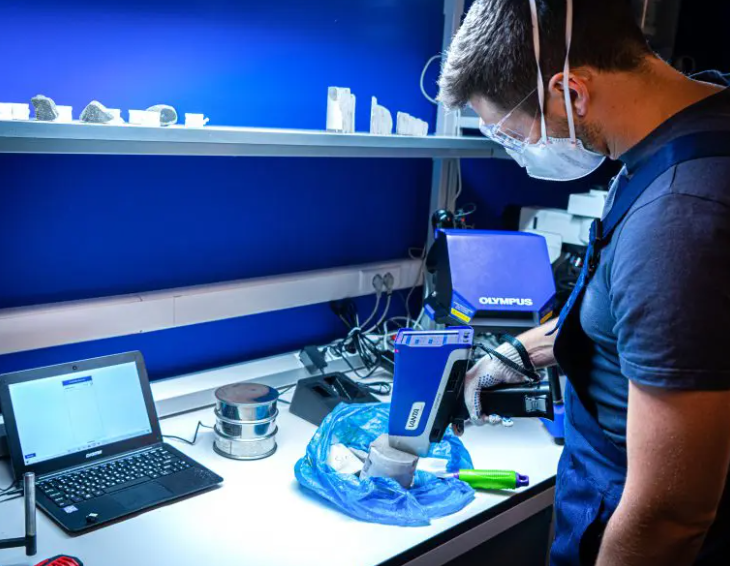
At Noor Vision International, we view catalytic converter recycling not just as a profitable business, but as a cornerstone of sustainability in the global metals market. Accurate and reliable analysis of Platinum Group Metals (PGMs) — platinum (Pt), palladium (Pd), and rhodium (Rh) — is essential both for the industry and for every company aiming to maximize recovery and ensure compliance.
Catalytic converters, also called car cats, are devices designed to reduce harmful vehicle emissions. Their internal honeycomb structure is coated with a catalytic layer containing PGMs. These precious metals convert toxic gases such as CO, hydrocarbons, and NOx into less harmful substances before they are released into the atmosphere.
With an average lifespan of about 100,000 km, converters eventually reach the end of their service life. Yet the PGMs they contain can be recovered, refined, and reintroduced into production. Today, more than 40% of all new catalytic converters use recycled PGMs — proof that recycling is the smarter path to maintaining clean air, profitability, and resource efficiency.
Platinum and palladium remain the most effective catalysts for neutralizing exhaust gases. While platinum also finds applications in jewelry and electronics, 90% of palladium is consumed by the automotive industry. Mining palladium has low efficiency and high environmental costs, while demand continues to grow due to tightening emission standards worldwide. Recycling therefore provides a dependable supply chain and drastically lowers the carbon footprint compared to extraction.
To achieve accurate valuation and efficient processing, X-ray fluorescence (XRF) analysis has become a standard tool in catalytic converter recycling. Portable XRF technology allows rapid, non-destructive testing of Pt, Pd, and Rh concentrations in spent converters. In seconds, recyclers can identify grades, group materials for processing, and determine fair market prices.
This capability ensures:
Accurate PGM content measurement — avoiding over- or underestimation.
Efficient sorting — distinguishing high-grade catalytic converters from lower-grade DPFs (diesel particulate filters) and DOCs (diesel oxidation catalysts).
Market adaptability — as PGM concentrations and substrate compositions evolve, calibrated XRF analysis helps recyclers remain competitive.
Industry experience shows that up to 90% of analysis errors stem from poor sample preparation. To minimize discrepancies, Noor Vision follows structured preparation protocols:
Initial sorting by type, discarding “empty” units.
Crushing into fine, uniform powder.
Homogenisation for consistency across samples.
Sampling and testing using multiple measurements to ensure accuracy.
These steps reduce error margins and allow consistent, verifiable results, building trust between buyers and suppliers.
The global trade in catalytic converters is not without risks: some suppliers may artificially inflate weight or attempt to misrepresent material quality. XRF analysis provides a reliable safeguard, ensuring transparency and preventing costly mistakes. By cross-checking results with reference libraries and independent laboratories, Noor Vision guarantees fairness in every transaction.
As environmental standards continue to tighten and the demand for PGMs grows, catalytic converter recycling will only expand in importance. Advanced analysis methods, from next-generation XRF to XRD, will allow even more precise assessment of complex substrates like silicon carbide and sulphur-bearing materials.
At Noor Vision International, we are committed to integrating these technologies into our operations. By combining accurate analysis, sustainable practices, and global trade expertise, we ensure that every converter recycled contributes to cleaner air, reduced waste, and a stronger circular economy.